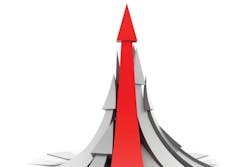When Mark Hall decided to exit the collision repair industry last spring after 29 years in business, he contacted two large companies to see if they’d be interested in taking over his two Illinois-based CARSTAR shops. Today, those shops operate under the Sterling Autobody and Collision Revision umbrellas. Hall had interest from independent shop owners, but chose to go with the big guys for one simple reason: financial security.
“If I were doing a cash sale I wouldn’t care who I sold to, but because of the size of the operations it’s difficult to get financing,” he says. “In both cases I was going to be involved in the real estate, and I wanted buyers that I trusted to make enough money to pay me for the real estate. And the people I trust to do that are big multishop operators (MSOs).”
Hall had reason to be wary: Five years earlier, he’d sold one of those shops to an individual who ended up, in Hall’s words, “in over his head.” The new operator couldn’t pay the rent, so Hall ended up soliciting other potential operators.
“I know there are lots of great independent collision repair shops,” he says, “but I also know the power of large operators in the industry.”
Indeed, some large operators appear to be getting even bigger these days: During the past few years some of the collision repair industry’s biggest operators have been growing in part by acquiring other shops. ABRA Auto Body & Glass, one of the largest collision repair companies with 98 locations, says on its website that “plans for accelerated national growth over the next several years include acquiring existing facilities and building new locations.” Collision Revision Inc., which operates 27 locations in three states, has grown solely though acquisition since 2007.
So what’s driving the trend? A tough economy and pressures to be efficient both seem to be factors.
“For collision repair shops with the capital to expand, the current economic conditions allow for the reasonable purchase of independent facilities,” says Denise Caspersen, Collision Division manager of ASA.
Brandon Thomas, vice president, acquisitions and system improvements for Collision Revision, agrees. “Their previous retirement strategy is no longer as viable for [independent shop owners]. They may be underwater on their mortgage, or seeing such a decline in sales that it’s reduced their profit. [Consolidation]gives them an exit strategy.”
BickettErick , CEO of Fix Auto USA, which owns and licenses shops, witnessed the consolidation trend “crash and burn” in the mid-1990s. Now, he’s watching it come back again—driven, he says, by pressure on insurance companies to cut costs and be as efficient as possible.
“That trickles down to the suppliers—the body shops,” Bickett says. “[Insurance companies] are looking to lower the expense of getting cars repaired and administrating the claims. They would rather deal with one point of contact that can service 100 body shops. The single-location, well-run [operation] is more expensive for insurance companies to do business with.”
For large companies, of course, the revival of the consolidation trend is a boon. “Consolidation gives us an opportunity to grow inorganically during a time that [normally] would not be very conducive to growth,” says Thomas, who expects the consolidation trend to continue.
“It makes more sense to acquire rather than to put a brand new facility into a market that already has eight or 10 shops. And on the shop-owner side, you’ve got an aging demographic of shop owners who are working longer hours for less money. If there’s a way to make an exit, they’re more apt to listen.”
